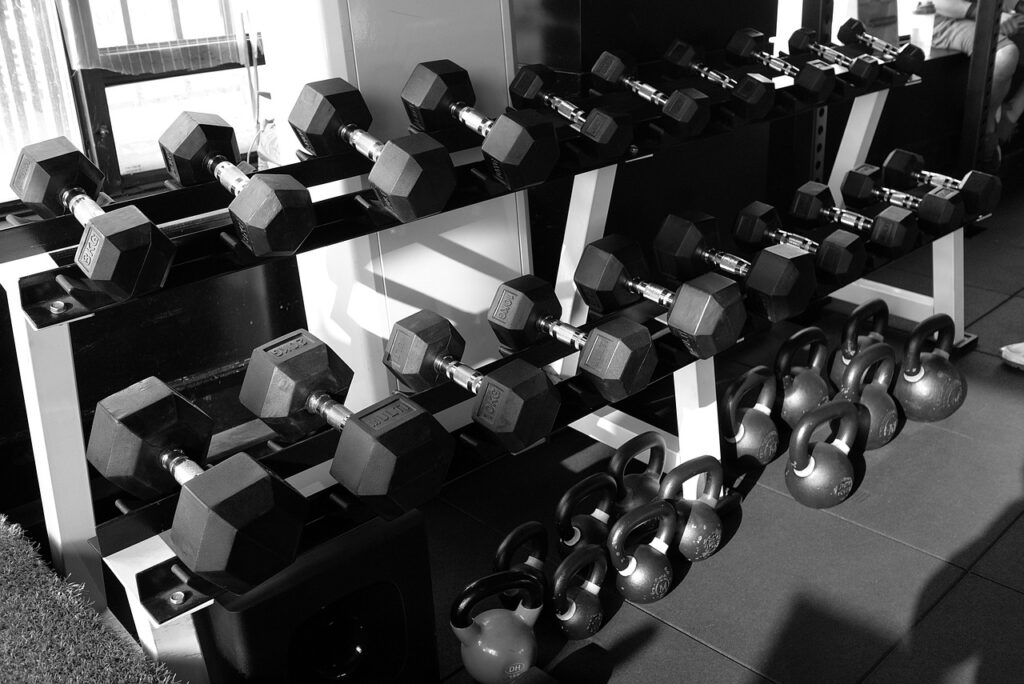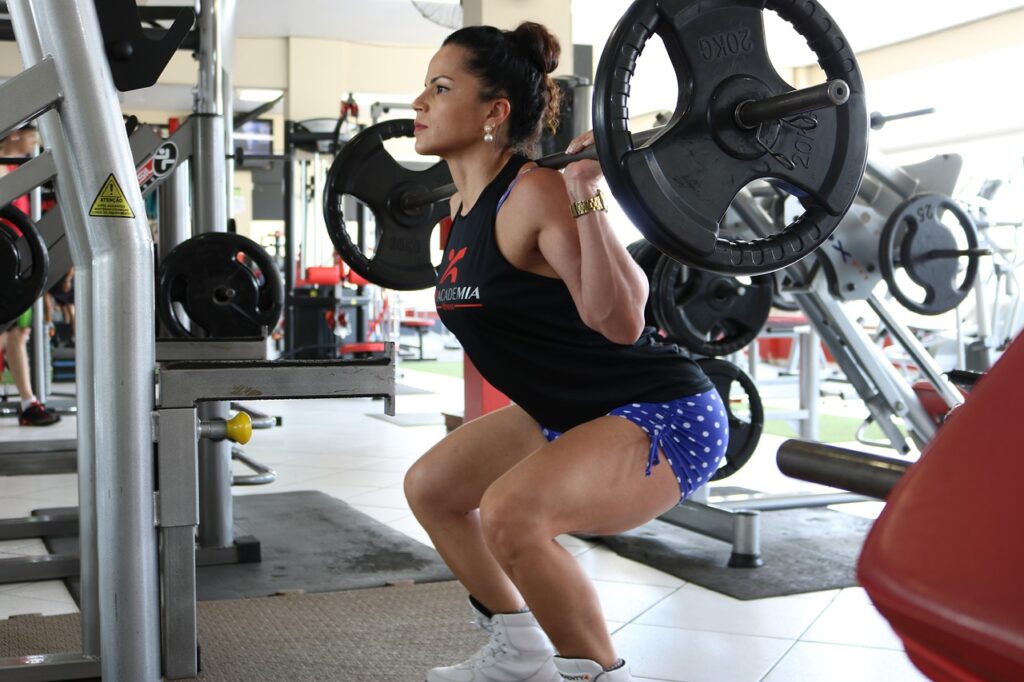Gaining muscle mass is a difficult and time-consuming process. To be successful, one needs to invest a significant amount of time and effort. Unfortunately, most people lack the self-control and perseverance necessary to put in the time and effort necessary to achieve long-term success.
The best exercises for gaining muscle can be done with a minimum of equipment, take up little area, and don't require a lot of training expertise or experience. Furthermore, these exercises can be performed by anybody, anywhere.
People who want to see results from their fitness efforts but don't want to spend a lot of money on equipment will find that these workouts are perfect for them. On the other hand, if you want to gain muscle without devoting a lot of time or money to the process, you should continue reading this post because I will cover numerous excellent exercises for increasing muscle. In addition, you might find these exercises fascinating.
Are 5x5 Exercises Effective For Increasing Muscle Mass?
Although 5x5 workouts help grow muscle, performing a few additional repetitions of each exercise is even more effective. You might, for instance, shorten your workouts or have more time for other exercises if you performed three sets of 10 repetitions instead of five sets of five by executing the same number of reps for each set. Again, the same muscle growth would be stimulated due to this action.
During the bulking phases of strength training programmes, 5x5 routines are widely performed. It is because they enable us to lift decently high weights (about 80% of our one-rep max) while getting in sufficient total volume to stimulate the growth of our muscles. The fact that they are successful further contributes to their widespread popularity. You have a good chance of putting on muscle if you perform all 55 workouts.
Now, the vast bulk of research shows that executing at least 6-8 reps per set helps us grow more muscle per set, and this may very well be the case. On the other hand, sets of five repetitions are nearly ideal for the number of reps needed to build muscle. When the differences in rep ranges are quite tiny, there is likely that there won't be much difference in the muscle growth that occurs.
In the most recent issue of Monthly Applications in Strength Sport, Greg Nuckols was quoted as saying that he believes that sets of moderate reps are more effective in promoting muscle growth than sets of 3-5 reps but that sets of 3-5 reps are also not that far off from being as effective as sets of moderate-reps. So we may need to do a few additional sets, but we only need to complete twice as many.
For example, rather than performing three sets of twelve repetitions, we might find it more beneficial to complete five sets of five repetitions (5x5) (3x12). Because of this method, proponents of 5x5 programmes like StrongLifts 5x5 commonly claim that these programmes stimulate higher muscle growth than lower-volume regimens like Starting Strength, which employs three sets of 5 reps of each exercise in the routine (3x5).
Does this indicate that 5x5 workout regimens are an effective way to increase muscle mass? It is possible that performing five sets of 5 repetitions on the bench press will stimulate the same amount of muscle growth as performing 312 repetitions. However, we also need to consider that these lower-rep sets require longer rest periods, can be more taxing on our joints, and require more total sets to achieve the same result.
Consequently, an individual may spend half an hour executing their 5x5 on the squat, feel a bit tired after that, and then be required to persevere through a 5x5 on the bench press and the row. They had merely completed three lifts over the workout, which lasted between sixty and seventy-five minutes, but they continued to feel incredibly weary.
The problem is that we spend so much effort on so few activities, making it difficult to exercise every muscle in our bodies. Think of an exercise like the bench press as an example.
The bench press is a fantastic exercise for stimulating growth in the chest and shoulders, but there are better activities for stimulating growth in the triceps (study). If we want to get the most out of the growth of our triceps, we need to do exercises that focus on extending the muscle. It is possible to complete a set of five repetitions on the bench press, followed by other exercises such as triceps extensions, lateral raises, and so on. However, it is easy to imagine how those routines could go on for a considerable time.
In addition, this is predicated on the premise that increasing the number of sets performed for each muscle group during activity from two to three will result in improved muscular growth. However, it is different when we analyse the amount of exercise you should do to get the desired increase in muscle size. The best way to enhance muscle growth during a workout is to execute four to eight sets for each muscle group.
To maximise muscle growth, we should complete anywhere from six to 10 sets of five reps each rather than the traditional five sets of five reps. When the volume starts to expand in such a way, it can be useful to have a method of encouraging muscle growth that is both simpler and more effective.
We can highlight the value of adopting moderate rep ranges by contrasting them with how a bodybuilder would train. For example, in the first ten minutes of their workout, an intermediate bodybuilder would complete three sets of twelve reps on the bench press, followed by three sets of fifteen skull crushers.
In only twenty minutes, they could stimulate the same chest growth and twice as much growth in their triceps, and they are presumably still feeling pretty good about themselves. Compared to other methods, this one helps you build muscle more quickly and efficiently.
Therefore, it is not the case that 5x5 strength training routines are incapable of assisting us in gaining muscle; rather, it is the case that hypertrophy training programmes, also known as bodybuilding routines, make it possible for us to do so in a more efficient and timely manner.
What Exercises Will Give You Bigger Biceps?
You need to develop an efficient workout routine if you want to increase the size of your biceps and the size of all of the other muscles in your body. Your muscle will adapt over time if it continues to be stimulated in the same way or be subjected to the same amount of weight, as stated by the National Academy of Sports Medicine (NASM). Therefore, if you exercise your biceps with the same weight each time, your muscles will develop accustomed to it and retain the same size. However, it is the reverse of what you want to happen, so it is important to vary your weight.
Therefore, the National Association of Sports Medicine (NASM) recommends that you construct a progressive stress programme (muscle growth) to promote hypertrophy. In addition, it indicates that you will need to increase your weight resistance for some time gradually. (You are free to reduce the number of repetitions you perform if doing so permits you to lift a bigger total weight.)
You can target your biceps specifically with several different exercises. You have the option of performing either conventional or hammer curls when using dumbbells. Try curling a barbell or using a cable machine for some diversity in your workout. Regardless of the type of curl you are performing, you should keep your body still and not use momentum to raise the weight back up.
The American Council on Exercise recommends adding drop sets to your workout routine to promote blood flow and definition in your biceps. You can do it by performing exercises in a lower repetition range. For example, perform an exercise until you achieve your maximum capacity, then go to the drop set. When you cannot complete another repetition, you should take a little rest, reduce the amount of weight you are lifting, and then perform the exercise again.
Identify Your Lifting Limits
To get the most out of your workout, you should aim to lift between 60 and 80 per cent of your one-rep maximum. Your one-rep maximum is the most weight you can lift in a single repetition.
Using the one-repetition max predictor available on ExRx.net, you can determine your one-rep strength (see Resources). After receiving the all-clear from your primary care physician, your next best option is to seek assistance from a certified fitness professional, such as a personal trainer or another qualified fitness professional. They can guide you in determining the appropriate dosage for you.
A Winning Combination
Since high reps support hypertrophy and low reps encourage strength improvements, combining the two rep ranges should, in theory, result in muscle and strength gains appropriate for the Greek gods, as high reps encourage hypertrophy and low reps encourage strength gains.
You must devote equal amounts of time to high-rep and low-rep levels if you want to make the most of your efforts. Your body is relieved of the strain caused by low-rep sets when you perform high-rep exercises, and at the same time, your muscles and connective tissues are improved. In addition, the central nervous system (CNS) and neuromuscular efficiency improve with low-rep sets. Because of how much more effective and efficient you are after improving your efficiency, you will be able to use even more weight when you perform your heavy lifts after you have improved your efficiency.
To give you an example of what I frequently do with clients who are concerned about their physique, I classify their set-rep plans into one of two categories, as follows:
- High repetition: eight to twelve repeats for each set
- Low rep range: 4–8 repetitions for each set
These rules are not inviolable by any means. More repeats, ranging from 15 to 20, could be used. On the other hand, there are circumstances in which you might want to use a heavier weight and complete one to five repetitions of the exercise.
The primary benefit of switching back and forth between these two intensities is that it will continuously challenge your body to adapt, grow, and become more proficient.
Does A Hypertrophy Repetition Range Exist?
Sets of 1–5 repetitions are less effective and lead to less muscular growth than sets with six or more repetitions. Additionally, sets with 20 or more repetitions are more uncomfortable, making it difficult to expend enough effort to stimulate growth. Because of this, the "hypertrophy rep range" is sometimes described as between 6 and 20 reps.
Some experts, such as Greg Nuckols, MA, and Mike Israetel, PhD, believe that 5–30 repetitions are optimal for acquiring muscular growth. Other experts believe 4–40 repetitions are perfect for developing muscular growth. James Krieger, MS, and other researchers prefer sets of eight or more repetitions for the same reason. On the other hand, each of these hypertrophy rep ranges is fundamentally the same. If we start mixing them into an effective bodybuilding and hypertrophy programme, they resemble one another even more.
Sets of 1–5 are often more taxing on our joints and connective tissues, which may result in more injuries and call for a longer period to heal from those injuries. In addition, there are problems associated with executing sets of 20–40 repetitions.
To reliably stimulate muscle growth, we need first to bring them closer to reaching their maximum muscular capacity. Second, doing high-rep sets until failure can be so excruciating that it makes people want to puke up, quit working out, or despise it as a form of physical activity. Third, sets with a higher repetition range have the potential to do considerable damage to our muscles, which will make it more challenging for us to recover from our workouts.
Last but not least, a recent in-depth study by Dr Brad Schoenfeld has revealed that any load heavier than 30% of a person's one-rep maximum can potentially foster muscle growth. It is the case so long as the sets are brought sufficiently close to failure.
He notes that higher-rep sets take longer and are much more painful, but low-rep sets generate less muscle growth with each repetition while putting greater stress on our joints. It is something that he mentions. He suggests that you, as a general rule, stick to moderate rep ranges when working on gaining muscle.
Therefore, although sets ranging from 4 to 40 can be beneficial in promoting muscle growth, it is much simpler to acquire muscle if we concentrate most of our attention on exercises that require 6 to 20 repetitions. And even within that limited rep range, some lifts respond better to other rep ranges, further narrowing the available range.
Your Last Set Is Simple
If your workout plan calls for ten repetitions, but you finish each set with the feeling that you could have done more, you should try increasing the weight you lift. According to Holly Perkins, CSCS, author of Lift to Get Lean, a good rule of thumb is that the last two reps of each set should be tough and feel a bit shaky. She says this indicates that the exercise is performed correctly (but still in good form).
She recommends you cut down on the total number of reps you perform throughout each session. Because your muscles may respond to the change in weight by lowering the number of reps you perform, you should begin by performing three sets of eight to ten reps and then evaluate how this feels. Typically, you would perform three to six sets of 12 to 15 reps.
Why Can't I Train Everyone At Once?
Some people find undulating periodization to be enjoyable. This type of periodization involves hitting different set-rep schemes on different days of the week.
If any of these apply to you, perhaps your workouts look something like this:
- Monday: three sets of ten repetitions.
- On Wednesday, complete five sets of 5 repetitions.
- On Friday, perform ten sets of 3 repetitions.
The fact that you can finish the entire weekly programme in a single training week gives the impression that your training is both astute and efficient. If you are just getting started with weightlifting or have never tried a routine like this, you can use this effectively. However, because you send your body multiple contradicting signals, a setup like this will perform less effectively than it did in the beginning as you advance.
If you worked out on Monday, your body would be in the mode to gain size, but if you worked out on Wednesday, your body would be somewhat more in the mode to gain strength. Last but not least, the workout on Friday will focus on raw strength and will be the polar opposite of the session on Monday. So, what actions are recommended for a body that is confused? As your level of expertise rises, you'll need to hone your attention and learn to conduct the muscle symphony in your body (and, thus, training).
It's one of the reasons why a world-class sprinter can't just up and start training for a marathon one day and expect to be equally as good at both distances as they are at sprinting.
While spending time on both ends of the neural-metabolic continuum is important, you must be patient and limit your attention to just one at a time to succeed. Spending at least four to six weeks focused on the first end is the usual norm, and you should follow it before you even think about switching to the other end.
The Last Phase Is Autoregulation
You should now be at the point where your workouts alternate between high-rep and low-rep routines; excellent work! The next step is to vary the workout's intensity during the training cycle regularly. According to an old Chinese saying, "a mountain is encircled by two valleys". You can't expect to train at an intensity equal to or more than 110 per cent every time. So you are going to tyre yourself out instead. You can create layers by alternating strenuous activity days with more moderate exertion.
The astute reader (that'd be you!) would reasonably speculate whether or not to achieve this objective by simply alternating between high and low rep ranges. But, unfortunately, it does it in a manner that can be described as somewhat vulgar.
Should my muscle-building routine include cardio?
Cardiovascular activities improve heart health, but too much can hinder muscular growth. Resistance exercise and less cardio are beneficial for muscle gain. However, brisk walking or light jogging can improve cardiovascular health and fitness.
How long until muscle mass gains show?
Genetics, training intensity, nutrition, and consistency affect muscle mass increase time. Muscle mass changes usually require weeks to months of consistent training and nutrition. However, muscle growth is gradual, so long-term effort and patience are needed to see results.
How does nutrition help build muscle?
Gaining muscle requires proper nourishment. Protein is essential for muscle growth and repair. Protein-rich foods include lean meats, poultry, fish, eggs, dairy, legumes and tofu. Intense workouts and muscle building require enough calories and a balance of carbohydrates and healthy fats.
Should I workout my whole body or specific muscle areas for muscular mass?
It's crucial to train balanced, but compound workouts that target many muscular groups are better for muscle building. This maximises muscle activation and strength. Isolation workouts can also help target certain muscle groups.
How crucial is rest and recovery for muscle mass gain?
Muscle growth requires rest and rehabilitation. Muscles require time to repair after working exercise. To recover, you need rest and sleep between workouts. Rest and recovery help prevent overtraining, muscular exhaustion, and muscle gain.


